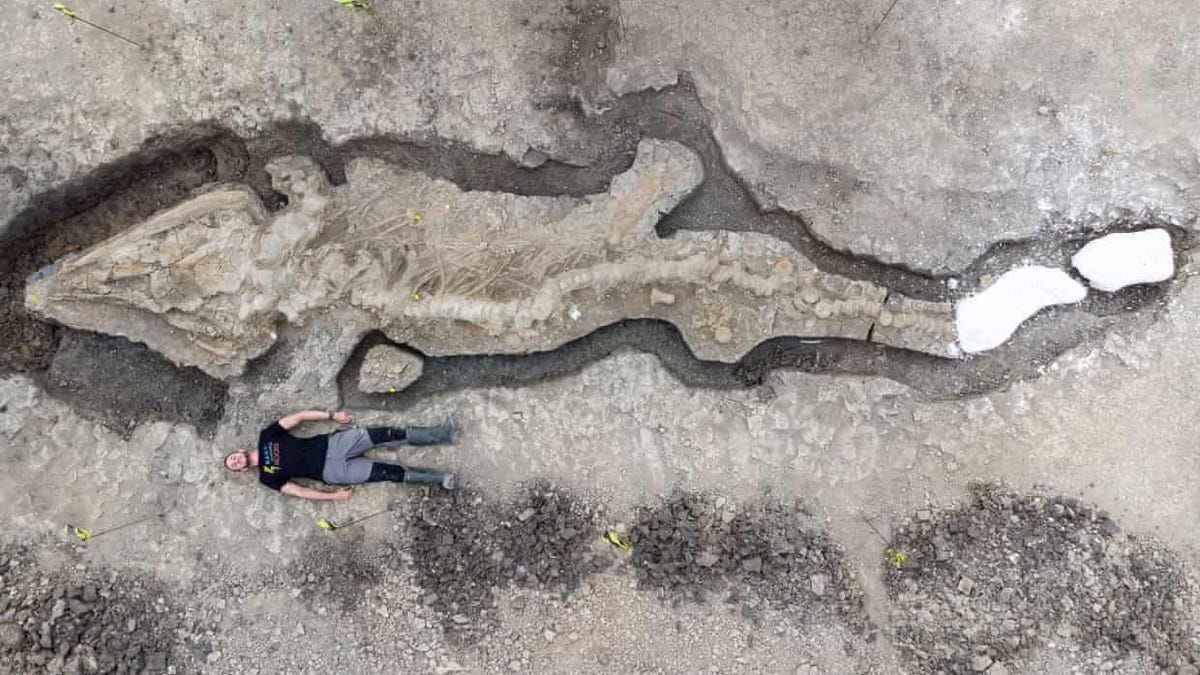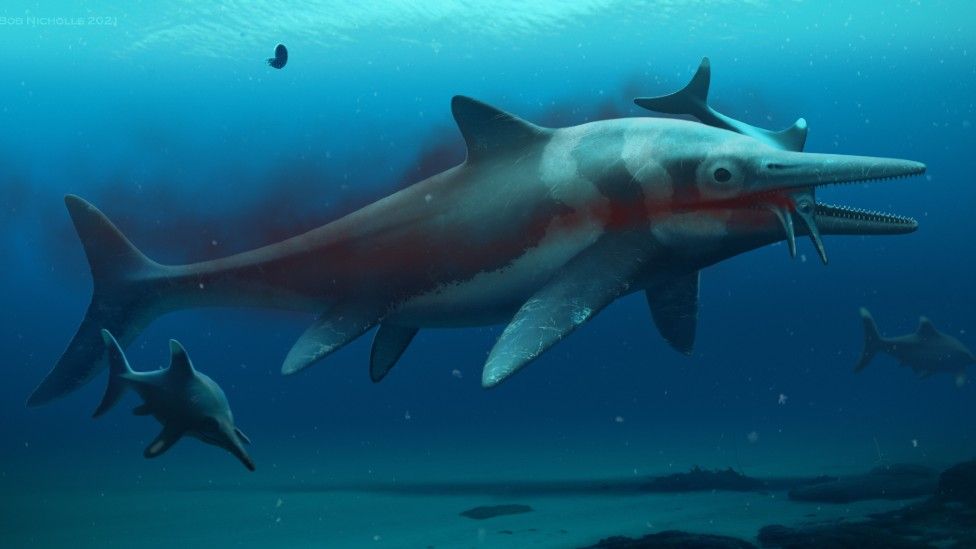In February 2021, Joe Davis, leader of the UK’s Rutland Conservation Team, was routinely draining a lagoon island for re-landscaping on the grounds he manages. To his surprise, a few odd-looking clay pipes protruded from the mud. Upon closer inspection, he realized they weren’t pipes at all. They were vertebrae.

“We followed what indisputably looked like a spine,” Davis said in a statement. Then, along with reserves officer Paul Trevor, Davis says he discovered something that could have been a jawbone. “We couldn’t quite believe it.”
Soon, the duo would come to understand they’d stumbled upon a 180-million-year-old, 32-foot (10 meter) ichthyosaur, often referred to as a sea dragon, with a 2,000-pound (1 ton) skull.
Contrary to their name, these ancient beings weren’t dinosaurs. Rather, all species classified as ichthyosaurs were aquatic creatures, distantly related to lizards, with an uncanny resemblance to dolphins. However, they were most abundant during the Triassic and Jurassic periods, about 251 million to 145.5 million years ago, so they did live alongside our dinosaur friends.

Scientists have found fossils of these swimming giants in the past, such as the first one ever uncovered in the mid-1800s by British paleontologist Mary Anning and two smaller, incomplete skeletons analyzed in the 1970s; interestingly, the latter pair were located in the same Rutland Water nature reserve as the recently unearthed sea dragon. Even so, according to the statement released Monday, the newly discovered Ichthyosaur, known as “Rutland Sea Dragon,” is “the biggest and most complete skeleton of its kind found to date in the UK” and “the first ichthyosaur of its species found in the country.”
Led by Dean Lomax, a world expert in ichthyosaurs, a team of paleontologists spent the last year or so excavating the massive fossilized remains. “It was an honor to lead the excavation,” Lomax said. “Britain is the birthplace of ichthyosaurs — their fossils have been unearthed here for over 200 years with the first scientific dating back to Mary Anning and her discoveries along the Jurassic Coast.”
“It is a truly unprecedented discovery,” Lomax added, “and one of the greatest finds in British paleontological history.”





